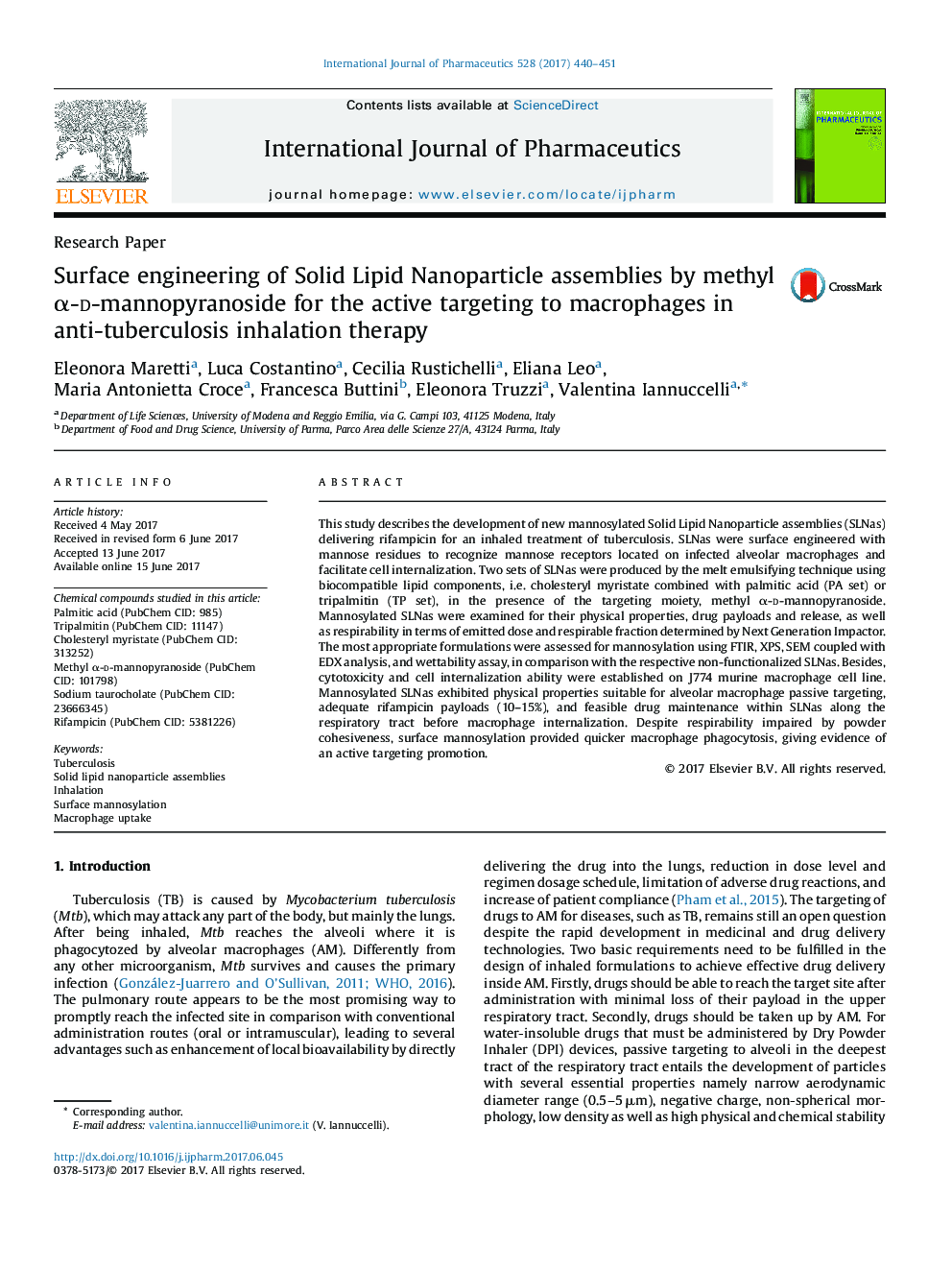| Article ID | Journal | Published Year | Pages | File Type |
|---|---|---|---|---|
| 5550340 | International Journal of Pharmaceutics | 2017 | 12 Pages |
â¢Mannosylated SLN assemblies (SLNas) were investigated for inhaled anti-TB therapy.â¢Mannose residues were detected on SLNas surface.â¢Mannosylation proved to increase macrophage phagocytosis rate.â¢Mannosylation impaired SLNas respirability.
This study describes the development of new mannosylated Solid Lipid Nanoparticle assemblies (SLNas) delivering rifampicin for an inhaled treatment of tuberculosis. SLNas were surface engineered with mannose residues to recognize mannose receptors located on infected alveolar macrophages and facilitate cell internalization. Two sets of SLNas were produced by the melt emulsifying technique using biocompatible lipid components, i.e. cholesteryl myristate combined with palmitic acid (PA set) or tripalmitin (TP set), in the presence of the targeting moiety, methyl α-d-mannopyranoside. Mannosylated SLNas were examined for their physical properties, drug payloads and release, as well as respirability in terms of emitted dose and respirable fraction determined by Next Generation Impactor. The most appropriate formulations were assessed for mannosylation using FTIR, XPS, SEM coupled with EDX analysis, and wettability assay, in comparison with the respective non-functionalized SLNas. Besides, cytotoxicity and cell internalization ability were established on J774 murine macrophage cell line. Mannosylated SLNas exhibited physical properties suitable for alveolar macrophage passive targeting, adequate rifampicin payloads (10-15%), and feasible drug maintenance within SLNas along the respiratory tract before macrophage internalization. Despite respirability impaired by powder cohesiveness, surface mannosylation provided quicker macrophage phagocytosis, giving evidence of an active targeting promotion.
Graphical abstractDownload high-res image (141KB)Download full-size image
